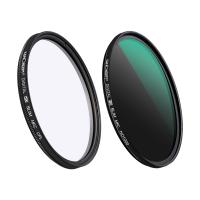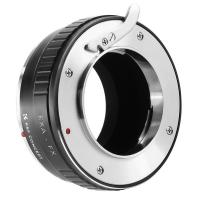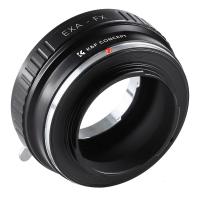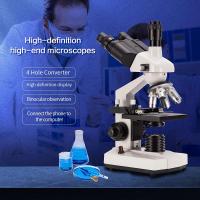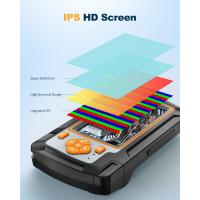What Is An Advantage Of A Light Microscope?
One advantage of a light microscope is that it allows for the observation of living specimens in real-time. This is because the light used in the microscope does not harm the specimen, allowing it to continue its natural processes while being observed. Additionally, light microscopes are relatively inexpensive and easy to use, making them accessible to a wide range of users. They also have a relatively high resolution, allowing for the observation of small structures such as cells and organelles. Finally, light microscopes can be used to observe a wide range of specimens, from cells and tissues to larger organisms such as insects and plants.
1、 High magnification with low cost and easy operation.
An advantage of a light microscope is its high magnification with low cost and easy operation. Light microscopes use visible light to magnify specimens, making them a cost-effective and accessible tool for scientific research and education. They are also relatively easy to operate, requiring minimal training and maintenance.
In addition to their affordability and ease of use, light microscopes have several other advantages. They allow for real-time observation of living specimens, making them ideal for studying biological processes such as cell division and movement. They also have the ability to produce high-resolution images, allowing researchers to study the fine details of specimens at the cellular and subcellular level.
Recent advancements in technology have further enhanced the capabilities of light microscopes. For example, the development of confocal microscopy has allowed for the creation of three-dimensional images of specimens, providing a more comprehensive understanding of their structure and function. Additionally, the use of fluorescent dyes and probes has enabled researchers to visualize specific molecules and structures within cells, further expanding the range of applications for light microscopy.
Overall, the advantages of light microscopes make them a valuable tool for scientific research and education. Their affordability, ease of use, and ability to produce high-resolution images make them accessible to a wide range of users, from students to professional researchers. With continued advancements in technology, the capabilities of light microscopes are likely to continue expanding, further enhancing their value as a scientific tool.

2、 Ability to observe living specimens.
An advantage of a light microscope is its ability to observe living specimens. This is because light microscopes use visible light to illuminate the specimen, allowing for the observation of living cells and tissues in real-time. This is particularly useful in fields such as biology and medicine, where the study of living organisms is essential.
In recent years, advancements in technology have further enhanced the capabilities of light microscopes. For example, the development of fluorescence microscopy has allowed for the visualization of specific molecules within living cells, providing researchers with a powerful tool for studying cellular processes. Additionally, the use of confocal microscopy has enabled the creation of three-dimensional images of living specimens, providing a more detailed understanding of their structure and function.
Another advantage of light microscopes is their affordability and ease of use. Compared to other types of microscopes, such as electron microscopes, light microscopes are relatively inexpensive and require minimal training to operate. This makes them accessible to a wider range of researchers and students, allowing for greater participation in scientific discovery.
In conclusion, the ability to observe living specimens is a significant advantage of light microscopes. With the latest advancements in technology, these microscopes have become even more powerful tools for studying the intricacies of living organisms. Their affordability and ease of use also make them accessible to a wider range of researchers, further advancing our understanding of the natural world.

3、 Can be used to view a wide range of specimens.
An advantage of a light microscope is that it can be used to view a wide range of specimens. This type of microscope uses visible light to illuminate the specimen, allowing for clear and detailed images to be produced. Light microscopes are commonly used in biology, medicine, and other scientific fields to study cells, tissues, and other small structures.
One of the latest advancements in light microscopy is the development of super-resolution microscopy. This technique allows for the visualization of structures that were previously too small to be seen with traditional light microscopes. Super-resolution microscopy uses specialized techniques to overcome the diffraction limit of light, allowing for images with resolutions of up to 20 nanometers to be produced.
Another advantage of light microscopy is that it is relatively inexpensive and easy to use. Compared to other types of microscopes, such as electron microscopes, light microscopes are much more affordable and require less specialized training to operate. This makes them accessible to a wider range of researchers and students, allowing for more widespread use in scientific research and education.
Overall, the versatility, affordability, and ease of use of light microscopes make them an essential tool in many scientific fields. With the latest advancements in super-resolution microscopy, these microscopes are becoming even more powerful and capable of producing detailed images of structures that were previously invisible.

4、 Provides a clear and detailed image of the specimen.
An advantage of a light microscope is that it provides a clear and detailed image of the specimen. This is because light microscopes use visible light to illuminate the specimen, allowing for high-resolution imaging of the sample. Additionally, light microscopes are relatively easy to use and maintain, making them a popular choice for many researchers and educators.
In recent years, advances in technology have led to the development of new types of light microscopes that offer even greater resolution and imaging capabilities. For example, confocal microscopy uses a laser to scan the specimen and create a three-dimensional image, while fluorescence microscopy uses fluorescent dyes to highlight specific structures within the sample.
Another advantage of light microscopes is their versatility. They can be used to study a wide range of specimens, from cells and tissues to microorganisms and small organisms. This makes them an essential tool in many fields of research, including biology, medicine, and materials science.
Despite their many advantages, light microscopes do have some limitations. For example, they are limited by the wavelength of visible light, which means that they cannot resolve structures smaller than about 200 nanometers. Additionally, they are not well-suited for imaging opaque or thick specimens, as the light may not penetrate deeply enough to provide a clear image.
Overall, the advantages of light microscopes make them an essential tool for many types of research and education. As technology continues to advance, we can expect to see even more powerful and versatile light microscopes in the future.
























